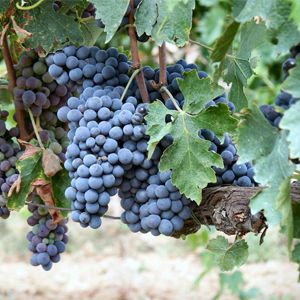 DELIVERY FROM £4.95
DELIVERY FROM £4.95 FREE DELIVERY FOR ORDERS OVER £100
FREE DELIVERY FOR ORDERS OVER £100Home » Community » Wine and Grape Guide » Sangiovese Grosso (Brunello)

The Sangiovese grape, one of Italy’s most important and historic wine varieties, has ancient and somewhat mysterious origins. Its name is thought to derive from the Latin “Sanguis Jovis” - the blood of Jupiter - highlighting its long-standing reverence in Italian viticulture. Sangiovese exists in two primary forms: Sangiovese Grosso (meaning “large” in Italian) and Sangiovese Piccolo (“small”), each with distinct characteristics and regional identities.
Sangiovese Grosso, the larger-berried clone, is primarily cultivated in Tuscany, where it is used to produce some of Italy’s most prestigious and age-worthy wines. This noble grape is the foundation of Brunello di Montalcino, one of the country's most iconic red wines, known for its power, structure, and exceptional ageing potential. Sangiovese Grosso is also the genetic parent of several sub-varieties, including Prugnolo Gentile (used in Vino Nobile di Montepulciano) and Sangiovese di Lamole, both highly regarded for their elegance and aromatic complexity.
Unlike its smaller counterpart, which is widely planted throughout Tuscany and Central Italy, Sangiovese Grosso ripens late, requiring a warm and sunny climate to reach full maturity. When properly cultivated, it yields deeply colored, full-bodied wines with high acidity, firm tannins, and a complex aromatic profile. Flavours typically include ripe cherry, plum, dried herbs, earthy undertones, and hints of leather or tobacco with age.
Wines made from Sangiovese Grosso are celebrated for their structure, richness, and longevity, making them ideal candidates for cellaring. In fact, Brunello di Montalcino must legally be aged for several years before release, testament to the grape’s robust character and slow-developing beauty.



Before we say ciao, why not join our newsletter & stay up to date on everything happening on planet Italyabroad.com